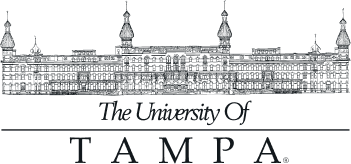Resources
What are the differences between a life in public health versus allied health?
What are the differences between a life in public health versus allied health?
| Attributes | Public Health | Allied Health |
Definition | The fulfillment of society’s interest in assuring the conditions in which people (as small as a handful of people or as large as all the inhabitants of several continents) can be healthy. | Health care practitioners with formal education and clinical training who are credentialed through certification, registration and/or licensure. |
Goal | The goal of public health is to improve lives through the prevention and screening of disease. | The goal of allied health professionals is to collaborate with physicians and other members of the health care team to deliver high-quality patient care services. |
Focus | The focus of public health intervention is to prevent rather than treat a disease through surveillance of cases and the promotion of healthy behaviors. | Allied health professionals are involved with the delivery of health or related services pertaining to the identification, evaluation and prevention of diseases and disorders, dietary and nutrition services, and rehabilitation and health systems management, among others. |
Core Functions | The assessment and monitoring of the health of communities and populations at risk to identify health problems and priorities; | Allied health professionals collaborate with physicians and other members of the health care team to deliver high-quality patient care services for the identification, prevention and treatment of diseases, disabilities and disorders. |
General Characteristics | There are three distinct characteristics of public health:
The base of knowledge for public health comes from a variety of disciplines, ranging from social sciences to biological sciences and business, brought together by a commitment to improving the public's health. While physicians treat the ills of individuals, public health professionals respond to society's health problems--domestic violence, young adult vaping, sexually transmitted diseases, hazardous waste and dangerous workplaces. | The allied health professions fall into two broad categories:
Technicians are trained to perform procedures, and their education lasts less than two years. They are required to work under the supervision of technologists or therapists. This part of the allied health field includes physical therapy assistants, medical laboratory technicians, radiological technicians, occupational therapy assistants, recreation therapy assistants and respiratory therapy technicians. The educational process for therapists or technologists is more intensive and includes acquiring procedural skills. In addition, students of therapy/technology learn to evaluate patients, diagnose conditions, develop treatment plans and understand the rationale behind various treatments in order to judge their appropriateness and potential side effects. |
Required Coursework for Major Required Coursework for Health Promotion and Practice | Health Science Courses: HSC 237 Determinants and Disparities in Health and Disease HSC 240 Glocal Disparities in Environmental Health HSC 275 Social and Behavioral Science HSC 340 Qualitative Research Methods HSC 355 Research Methods in Health Education and Promotion HSC 380 Materials and Methods in Health Education and Health Promotion HSC 446 Public Health Systems HSC 447 Public Health Disaster Preparedness and Emergency Response
HSC 490 Internship in Public Health Natural Science Courses: Biology and Chemistry Course Options | Health Science Courses: HSC 130 Medical Terminology HSC 250 Emergency Response BIO 198 General Biology I BIO 198L General Biology I Lab CHE 153 General Chemistry I Lab |
Internship Requirement | 6 Credit Hours | Optional |
Graduate Schools | Epidemiology | Physical Therapy |
Careers | Research Analyst | Occupational Therapy Medical Sales |

